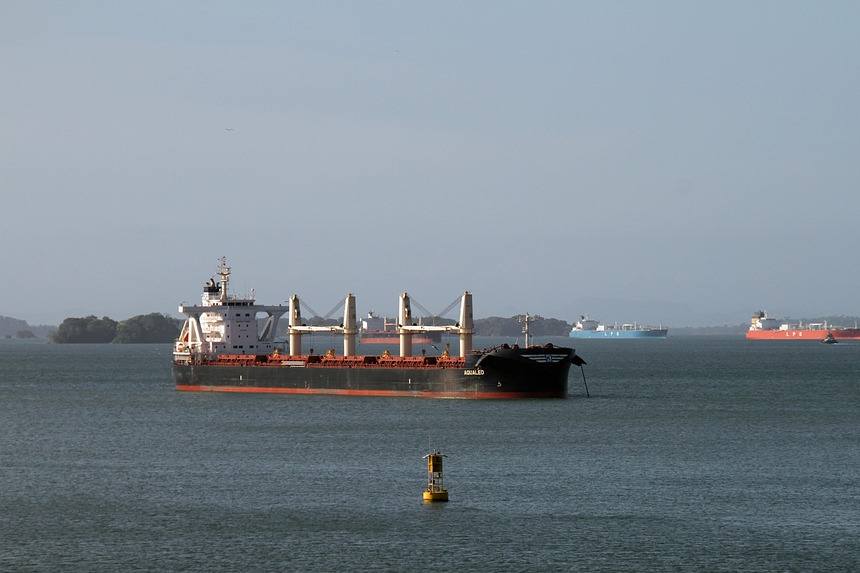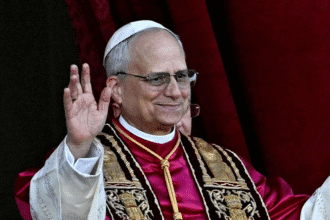In response to White House assertions, Panama has refuted rumors that it agreed to let U.S. government ships pass through the Panama Canal for free. According to the U.S. State Department, the U.S. government could now pass through the canal free of charge, potentially saving millions of dollars per year.
The Panama Canal Authority (ACP), however, reacted quickly, asserting that no modifications had been made to the current toll structure and that it “is empowered to set tolls and other fees for transiting the canal”.
Why Did the United States Make These Panama Canal Claims?
Regaining control of the Panama Canal, a vital international commerce route, has long been a goal of U.S. President Donald Trump. One of the busiest and most important routes for international shipping, the 51-mile (82-kilometer) waterway spans Panama and links the Atlantic and Pacific Oceans.
During a trip to Latin American nations this week, Secretary of State Marco Rubio urged Panama to implement “immediate changes” to prevent what he said was increasing Chinese influence over the Panama Canal. Rubio urged Panama to take immediate action and threatened to take “necessary measures” to protect its rights under the two countries’ pact.
How Did Panama React to American Demands?
The Panama Canal Authority stressed its independence in overseeing the canal’s operations and tolls in response to Rubio’s demands. The ACP stated that it was still willing to talk with the U.S. government and reiterated that it has not changed the tolls.
According to an ACP statement, “The Panama Canal Authority is still dedicated to collaborating with the U.S. Navy to give priority to U.S. vessel transit through the canal.” Rubio met with Ricaurte Vásquez Morales, the administrator of the Panama Canal, and José Raúl Mulino, the president of Panama, to discuss the matter despite the diplomatic tensions.
How Does the United States Affect Traffic in the Panama Canal?
A significant amount of the traffic that passes through the Panama Canal is made up of American vessels. 52% of the canal’s transits in 2024 featured ports of origin or destination in the United States, according to canal authorities. The canal is a crucial shortcut for international trade, avoiding the time-consuming and costly trip around the southern tip of South America, with up to 14,000 ships passing through it annually.
For what reason did Trump demand authority over the Panama Canal?
President Trump echoed a long-held sentiment that the United States was wronged when ownership of the waterway was returned to Panama when he announced in his inaugural address that he intended to “take back” the Panama Canal. Trump claimed that U.S. interests were in danger due to China’s influence in the area, especially through the Belt and Road Initiative.
Mulino vehemently denied these allegations, claiming Panama will continue to control the canal. He denied claims of Chinese influence over the waterway, saying, “The Panama Canal is and will remain under Panama’s control.” Mulino also underlined that no country meddles in Panama’s control of the canal, highlighting the nation’s will to autonomously oversee the vital economic conduit.
How Has Panama Reacted to the US Charges?
Mulino distanced Panama from China’s expanding power by promising that the country will not remain a part of China’s Belt and Road Initiative, despite the concerns. Mulino was adamant, meanwhile, that Panama would not tolerate outside meddling with its territorial claims to the canal.
Trump admitted that Panama had “agreed to certain things” during talks, despite his frustration with the state of affairs. He reaffirmed his displeasure with the current system in spite of these accords, especially with the way Panama is handling Chinese engagement in his opinion.
Historical Background: US Domination of the Panama Canal?
The Panama Canal was a vital component of the United States’ international commercial and military strategy since it was built in the early 20th century. However, U.S. President Jimmy Carter signed a pact in 1977 to gradually return management of the canal to Panama following years of demonstrations and demands for Panamanian sovereignty. Trump has frequently referred to the decision to turn over the canal as “a big mistake,” in keeping with his larger criticism of previous U.S. foreign policy.
Although some Americans still disagree about who owns the Panama Canal, Panama maintains its autonomy and authority over the waterway, claiming that outside forces will not change its mind.








